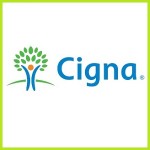
Cigna Health Insurance
Cigna has filed their 2017 California individual and family plan rates with the California Department of Insurance requesting overall rate increase of 18%. Cigna’s rate filing states the new 2017 health insurance premiums would affect 18,253 of their members in California.
Cigna requests an average 18% rate increase on health plans for 2017
Cigna’s Scope and Range of Rate Increase
Cigna estimates that 18,253 customers will be impacted by this rate increase. On average, customers will see an increase of 18%, excluding the impact of aging, with a range of increases from -4% to 45%. In addition to the factors described below, each customer’s rate increase depends on factors such as where they live, and the plan in which they are enrolled.
Cigna cites the main drivers of the premium rate increases as –
- Medical inflation and unit cost changes of medical services year over year: The underlying claim costs are expected to increase from 2016 to 2017, which is reflective of anticipated changes in the prices of medical services, the frequency with which consumers utilize services, as well as any changes in network contracts or provider payment mechanisms.
- The non-grandfathered individual marketplace is evolving in light of the material segment changes initiated by the Patient Protection and Affordable Care Act (PPACA), such as the introduction of the guaranteed issue requirement, modified community rating, subsidies, the risk adjustment program, and many other provisions. After consideration for expected risk adjustment transfers, the single risk pool experience for CHLIC in California was more adverse than assumed in the current rates. As a result, CHLIC’s best estimate of the average market-wide morbidity of the covered population has increased compared to 2016.
- Transitional Reinsurance Program Changes: As proposed in the 2017 HHS Notice of Benefits and Payment Parameters, the reinsurance program will end with the 2016 benefit year. Consequently, there will be no reduction in claim costs due to the program in 2017, driving an increase in premiums compared to 2016.
- Plan design changes and benefit modifications: Changes have been made to certain plans that are resulting in a decrease in expected cost share and therefore a decrease to premium. All plan designs conform to actuarial value and essential health benefit requirements.
- Health Insurance Industry Fee Changes: The suspension of the HII Fee for 2017 results in a decrease to premium compared to 2016.
Cigna states in the rate filing that they are in a strong financial position. They estimate their Post-Tax Stat Net Income for 2016 to be $1,353,000 with a return on equity of 42%.
The Cigna rate filing introduced three new health plans that they wish to offer in 2017.
- Bronze level plan with a $6,000 medical/drug deductible, and inpatient hospital copay
- Silver level plan with a $2,250 medical deductible and $500 drug deductible
- Silver level H.S.A. plan with $2,900 medical/drug deductible
According to the rate filing, some of these plans will have unique features which current methodologies for assigning cost can’t be quantified.
- Pharmacy Retail versus Home Delivery
- Outpatient Mental Health and Substance Services
- Telehealth benefit
- Inpatient hospital copay
- Urgent Care copay
Reasons the plan design is unique (benefits that are not compatible with the parameters of the Actuarial Value calculator, and materiality of those benefits):
Cost-Sharing for Pharmacy Retail vs. Home Delivery Service – The proposed plans in this filing offer Home Delivery pharmacy prescriptions in addition to retail pharmacy prescriptions. Since the AV Calculator does not allow for separate cost share inputs for retail and home delivery pharmacy prescriptions, the cost share for the pharmacy benefit was not compatible with the existing parameters of the AV Calculator.
Outpatient Mental Health and Substance Abuse Services – The proposed plans in this filing offer coverage for outpatient mental health and substance abuse services in both an office visit setting and a facility visit setting. Since the AV Calculator does not allow for separate cost share inputs for outpatient mental health and substance abuse office and facility visits, the cost share for these benefits was not compatible with the parameters of the AV Calculator.
Telehealth – The proposed plans in this filing offer a different cost structure for a Primary Care Visit in a traditional setting versus a Telehealth setting. Since the AV Calculator does not allow for separate cost share inputs for a Telehealth setting, the cost share for the Primary Care Visit benefit was not compatible with the parameters of the AV Calculator.
Copays for All Inpatient Hospital Services – The proposed plans in this filing have a separate cost structure for the inpatient facility services versus physician services. Since the AV Calculator does not allow for separate cost share inputs, the parameters for the inpatient cost structure were not compatible with the existing parameters in the AV Calculator.
Copays for Urgent Care Services – The AV Calculator does not currently provide an input for copays for Urgent Care Services because the National Claims Database that the Calculator is based on does not maintain data on Urgent Care Services. Some of the plans proposed in this filing include benefit designs that have copays for Urgent Care Services which are not compatible with the AV Calculator.
Cigna Rate Filing Submission with the California Department of Insurance



